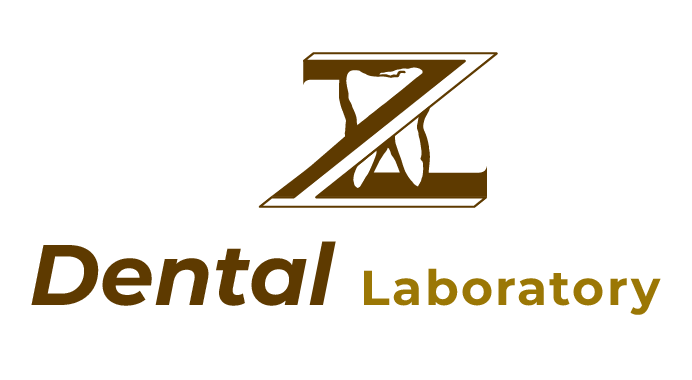The field of dental restoration has seen remarkable advancements in recent years, offering patients more effective, comfortable, and aesthetically pleasing solutions than ever before. From traditional methods to cutting-edge technologies, the landscape of dental care is continuously evolving.
1. What’s News In Dental Restoration Techniques?
1.1 Dental Implants: The Gold Standard
Dental implants have long been considered the gold standard for replacing missing teeth, providing a durable and natural-looking solution that can last a lifetime with proper care. These implants are titanium posts surgically placed into the jawbone, where they serve as a sturdy foundation for crowns, bridges, or dentures. What sets dental implants apart is their ability to fuse with the bone, a process known as osseointegration, which helps preserve jawbone density and maintain facial structure.
Recent innovations have further improved the success rates and outcomes of dental implants. Advances in imaging technology, such as cone-beam computed tomography (CBCT), allow for more precise planning and placement, reducing the risk of complications and enhancing patient satisfaction. Additionally, new surface treatments for implants are being developed to promote faster and more reliable osseointegration.
1.2 All-on-4 Implants: Streamlining Full-Arch Restorations
For patients who have lost most or all of their teeth, All-on-4 implants offer a streamlined and cost-effective solution. This technique involves placing just four implants in strategic positions within the jaw, which then support a full arch of prosthetic teeth. The All-on-4 approach minimizes the need for bone grafting, which is often required in traditional implant procedures, making it a quicker and less invasive option.
One of the most significant benefits of All-on-4 implants is that they can often be completed in a single day. Patients can walk out of the dental office with a brand-new smile, avoiding the long waiting periods associated with traditional dentures or multiple implant procedures. This innovation has revolutionized full-arch restorations, providing a lifelike and functional solution for those in need.

1.3 Same-Day Crowns: Convenience and Speed
The advent of same-day crowns is a game-changer in dental restoration, offering patients the convenience of receiving a permanent crown in just one visit. Traditionally, getting a crown involved multiple appointments, with a temporary crown being placed while the permanent one was fabricated in a lab.
With same-day crowns, advanced computer-aided design and computer-aided manufacturing (CAD/CAM) systems allow dentists to design, create, and place a custom crown in just a few hours. This not only saves time for the patient but also eliminates the discomfort and inconvenience of wearing a temporary crown. Same-day crowns are made from high-quality ceramic materials, ensuring a natural look and long-lasting durability.
2. Innovation in Technology affects Dental Restoration Technique
2.1 3D Printing Technology: Precision and Efficiency
3D printing technology is making waves across various industries, and dentistry is no exception. In dental restoration, 3D printing is used to create highly accurate models, crowns, bridges, and even dentures with unmatched precision. This technology allows for customization that perfectly matches the patient’s anatomy, leading to better fitting and more comfortable restorations.
Moreover, 3D printing significantly reduces the time it takes to produce dental restorations. What once required weeks of waiting can now be completed in a matter of hours. This not only enhances the patient experience but also allows dental professionals to offer quicker and more efficient services. As 3D printing technology continues to advance, its role in dental restoration is expected to expand even further.

2.2 Digital Impressions: Farewell to Goopy Molds
One of the most uncomfortable aspects of dental restorations for many patients has been the use of traditional impression molds. These often goopy and uncomfortable materials are now being replaced by digital impressions, which use advanced scanning technology to create a detailed 3D image of the patient’s teeth and gums.
Digital impressions offer several advantages over traditional methods. They are more accurate, reducing the likelihood of errors in the final restoration, and they are far more comfortable for the patient. Additionally, the digital data can be easily stored and transmitted, streamlining the entire restoration process and reducing the time patients spend in the dental chair.
2.3 Bioactive Materials: Promoting Healing
The use of bioactive materials in dental restorations is an exciting development that goes beyond merely replacing lost tooth structures. These materials are designed to interact positively with the body, promoting healing and regeneration. For example, bioactive glass is being used in dental fillings and crowns to help remineralize and strengthen the surrounding tooth structure, reducing the risk of further decay.
Bioactive materials can also help reduce inflammation and sensitivity, leading to a more comfortable experience for patients. As research in this area progresses, we can expect to see even more innovative applications that enhance the healing process and improve long-term outcomes in dental restoration.
2.4 Laser Dentistry: Minimally Invasive Procedures
Laser dentistry is another groundbreaking innovation that is transforming dental restoration techniques. Lasers can be used for a variety of procedures, including the removal of decayed tissue, reshaping gums, and preparing teeth for restorations. The precision of laser technology allows for minimally invasive procedures, reducing the need for drills and minimizing discomfort for the patient.
In addition to being less invasive, laser dentistry often results in faster healing times and less bleeding, making it an attractive option for both patients and practitioners. As laser technology continues to evolve, its applications in dental restoration are likely to expand, offering even more benefits in terms of comfort and efficiency.
3. Follow Z Dental Laboratory for more information about Dental Restoration Techniques
The world of dental restoration is undergoing a revolution, with innovations that are improving the quality, speed, and comfort of care. From the gold standard of dental implants to the precision of 3D printing and the healing properties of bioactive materials, these advancements are transforming the patient experience and setting new benchmarks for the future of dentistry. Whether you’re in need of a simple crown or a full-arch restoration, these cutting-edge techniques are paving the way for healthier smiles and happier patients.
For more insights and the latest updates in dental restoration techniques, follow Z Dental Laboratory. Our team is dedicated to staying at the forefront of dental technology, ensuring that you have access to the most advanced and effective solutions for your dental needs. Stay connected with us to learn how we can help you achieve the best possible outcomes in your dental care.
Hotline: (+84)963-870-270
Email: partner@zdentallabo.com
Website: https://global.zdentallabo.com/













